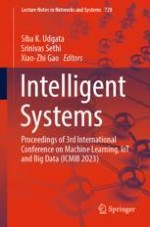This book features best selected research papers presented at the Third International Conference on Machine Learning, Internet of Things and Big Data (ICMIB 2023) held at Indira Gandhi Institute of Technology, Sarang, India, during March 10–12, 2023. It comprises high-quality research work by academicians and industrial experts in the field of machine learning, mobile computing, natural language processing, fuzzy computing, green computing, human–computer interaction, information retrieval, intelligent control, data mining and knowledge discovery, evolutionary computing, IoT and applications in smart environments, smart health, smart city, wireless networks, big data, cloud computing, business intelligence, Internet security, pattern recognition, predictive analytics applications in health care, sensor networks and social sensing, and statistical analysis of search techniques.
